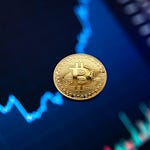We’ve all heard the sentence “you are what you eat”1 and with the exception of genetic diseases and other pre-existing medical conditions, it’s probably true in most cases.2
That said we really “consume information” and with it “create our individual reality” across a wide spectrum of life’s manifestations using all of our mind’s senses (not just taste) — including touching3, smelling, seeing4 and hearing5.
Attention to Attention
When reading this article, remember the old saying:
Where your attention is, there you are.
What your attention is upon, that you become.
In fact it’s not only what we choose to focus on. It also includes what we skillfully circumvent, thereby avoiding confrontation with what feeds our inner demons, e.g.:
the emotions we keep taking in;
the fears we simply don’t want to face;
the thoughts we let run idle;
the feelings we rumble upon others;
and many more examples, making attention a complex, but cornerstone aspect in the work of world-leading life coaches6, explaining why social media algorithms are optimized to keep us addicted7 and why there are patent filings8 aiming to commercialize our attention (including subconscious mental activities as well as conscious bodily activities) thereby extracting financial value from it.
If trust is the “ultimate currency”, then “attention” is the ultimate “economy”.
Listen to this episode with a 7-day free trial
Subscribe to Modern Times Opportunities to listen to this post and get 7 days of free access to the full post archives.








